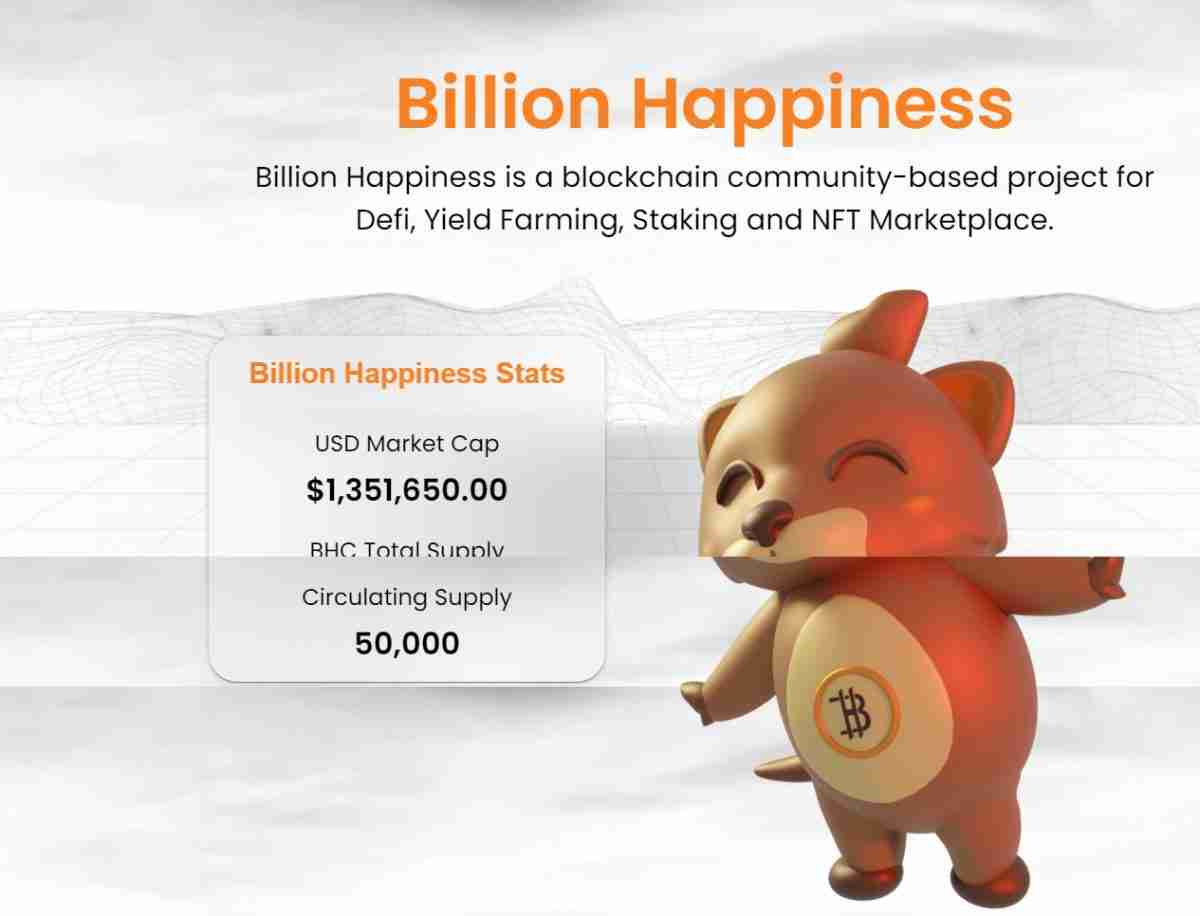What Is Happiness Token (HPS)?
Billion Happiness is a blockchain community-based project for Defi, Yield Farming, Staking and Happiness Token Marketplace. Billion Happiness is a blockchain community-based project, that introduces Blockchain to billions of people through simple needs including clothes or wear ables, crypto essentials like hardware wallets, and interests and passion including digital artworks.
It is committed to providing Happiness by rewarding its community through its token called BHC & HPS. The rewards can be earned from every transaction on its NFT Marketplace. Its further development led its way to the DeFi world. Making the token farmable, stake-able, and trade able on various exchanges.
Happiness Token Storage Key Points
| Coin Basic | Information |
|---|---|
| Coin Name | Happiness Token |
| Short Name | HPS |
| Circulating Supply | N/A |
| Total Supply | 1,000,000 |
| Source Code | Click Here To View Source Code |
| Explorers | Click Here To View Explorers |
| Twitter Page | Click Here To Visit Twitter Group |
| Whitepaper | Click Here To View |
| Support | 24/7 |
| Official Project Website | Click Here To Visit Project Website |
BHC Ecosystem
For every collected fee, 50% will be used to buy back BHC to be redistributed to your BHC Maxi Pool. NFT buyers will earn HPS rewards per transaction. 50% of collected fees in HPS will be burned monthly.
HPS Token
Happiness Token is a booster token for the Billion Happiness project to support, build an ecosystem, and Develop the NFT marketplace. To create, trade, or collect digital items secured with BSC blockchain. On top of its features, making it a complete NFT marketplace on the BSC, the marketplace has its own token, Happiness Token (HPS). HPS’s primary purpose is to be used as a Billion Happiness project booster. Currently, HPS will be integrated into the NFT marketplace, allowing artists to pay listing fees in HPS or BNB.
The latest fifth-generation stablecoin is a fractional-algorithmic stablecoin represented by FRAX. By introducing a partial mortgage mechanism, the stablecoin is easier to launch, and accord with the concept of pure on-chain assets. With volatility lower than pure algorithm stablecoin, this stablecoin type will most likely get extensive applications in the future.
Fractional Algorithmic
Happiness Token fractional-algorithmic adjustment mechanism of the fifth-generation stablecoin is the most consistent with the technical evolution goal of Chemix Labs. As the first synthetic asset of Chemix Labs, the technical route which QSD chooses is based on fractional algorithmic.
QSD is a fractional-algorithmic synthetic assets protocol that is open-source, permission less, and entirely on-chain. The goal of Chemix Labs is to establish a highly scalable, decentralized, algorithmic assets management system, consistently upgrade the technical basis for the development of Chemix Ecosystem.
The technical characteristics of QSD
- Fractional-Algorithmic: QSD’s supply mechanism is backed by collateral and parts of the supply algorithmic. The range of the collateral/algorithm ratio can fluctuate between 0-100%, and the specific mechanism will depend on the market’s pricing of the QSD stablecoin. If QSD is trading at above $1, the protocol decreases the collateral ratio. If QSD is trading at under $1, the protocol increases the collateral ratio.
- Community autonomy: Happiness Token Labs protocol will continue to practice the governance principle of community governance. Community developers will develop voluntarily and with no active management.
- Fully on-chain oracles: QSD uses weighted average prices of Uniswap (ETH),PancakeSwap (Binance Smart Chain) as the oracle source of collateral price, and the target price of $1 is from Chainlink.
Swap-based Monetary Policy
Happiness Token uses principles from automated market makers like Uniswap to create swap-based price discovery and real-time stabilization incentives through arbitrage. There are no predetermined time frames for how quickly the amount of collateralization changes, however, it can be inferred from the partial mortgage mechanism, they believe that as QSD adoption increases, users will be more comfortable with a higher percentage of QSD supply being stabilized algorithmically rather than with collateral.
The collateral ratio refresh function in the protocol can be called by any user once per 30 mins at the initial launch. The protocol can change the collateral ratio in steps of 0.2% if the price of QSD is above or below $1. When QSD is above $1, the function lowers the collateral ratio by one step and when the price of QSD is below $1, the function increases the collateral ratio by one step. Both refresh rate and step parameters can be adjusted through governance.






